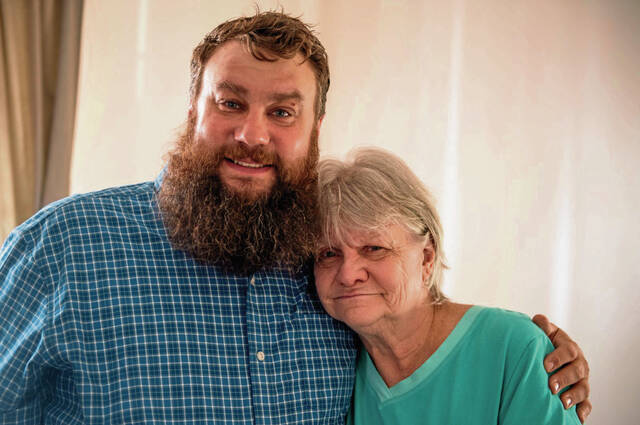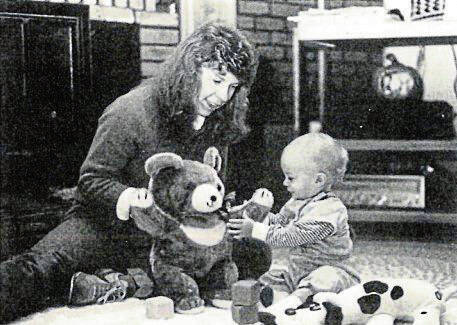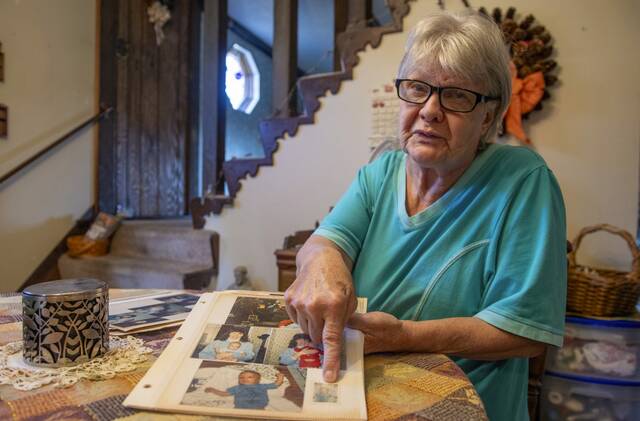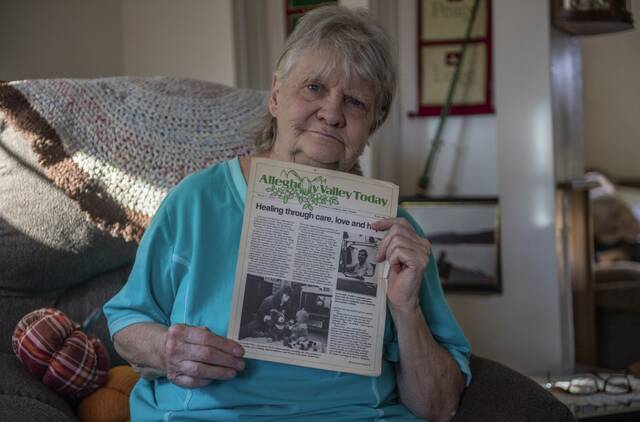Plum man's 40th birthday marks milestone for preemie care at Allegheny Valley Hospital
It’s been 40 years since Allegheny Valley Hospital in Harrison cared for its first premature baby.
Levi Price already knew that. His 40th birthday was last week. He was that baby.
According to his mother, he looked like a baby bird at birth.
“He looked like he fell right out of the nest,” said Paula Price of Plum’s Logans Ferry Heights neighborhood. At 33 weeks’ pregnant, she had an emergency cesarean section at Allegheny Valley Hospital in October 1984.
“He had to have all these wires, and his baby bottles looked like little test tubes,” she said.
The hospital housed an obstetrics unit at the time — it closed in 2006 — but technology and medical advances there lagged behind larger Pittsburgh hospitals.
Premature babies born from 1909, when Allegheny Valley Hospital opened in Tarentum, through the next 75 years were taken to West Penn Hospital in Pittsburgh’s Bloomfield neighborhood for care.
That all changed with the birth of Price, who at less than 3 pounds, was too fragile to be held, according to Paula Price.
“For a smaller, community hospital to be able to take care of a baby that early, 40 years ago, is kind of mind-boggling,” said Dr. William McCarran, director of newborn medicine at the AHN Pediatric Institute. “The technology we have today didn’t even exist back then. It would have been really scary and would have required a huge amount of resources to care for a baby that early. The lowest limits of viability would’ve been 28 to 30 weeks, but the vast majority would not have had good outcomes.”
For a preemie, any baby born before 37 weeks of pregnancy, to survive 40 years ago and thrive is special, no matter where they were cared for, McCarran said. At just 33 weeks, Price would be considered “moderately preterm” by today’s standards, according to the March of Dimes.
Today, Allegheny Health Network, Allegheny Valley Hospital’s parent company, has a network of neonatal care facilities, including its flagship 62-bed Neonatal Intensive Care Unit at West Penn. Physicians care for babies as small as 12 ounces.
Technology has changed dramatically, McCarran said, and, though babies born two or three months early still pose challenges, it’s “now our bread and butter. We see that every day.”
About 1 in 10 babies in Pennsylvania and Allegheny County are born prematurely, according to the March of Dimes. Premature refers to any infant born before 37 weeks of gestation. The local rate of premature birth is just slightly below the national average of 10.4%.
In Westmoreland County, the rate of premature birth is about 9%, according to the state Department of Health.
Complications from premature birth account for 36% of infant deaths in the U.S., according to the March of Dimes. It’s the largest single cause of infant death in the country.
Now married with two children, Price faced no lingering challenges from his premature birth. A graduate of Forbes Road Career & Technology Center and Plum High School, Price works for the borough’s public works department and operates an HVAC business with his father.
“I obviously don’t remember any of it, but my mom let me know as I was growing up,” he said. “It’s definitely a big deal being the first preemie child to be kept there.”
Paula Price said her pregnancy developed typically until about her seventh month, when she developed toxemia. The condition is characterized by high blood pressure and fluid retention. It eventually caused convulsions, and a decision was made to perform a C-section to save Levi’s life.
“I didn’t know anything about having a baby,” Paula Price said. “They could’ve come and told me I had a 22-pound baby instead of a 2-pound one. All I know is, I was blessed.”
McCarran said the situation likely was frightening for the Price family as well as the hospital medical staff.
Technology has transformed over the decades and moved the needle significantly for preemie care, he said.
“There are more innovations than I can possibly count,” McCarran said.
“Every two years, something comes along to help families have the best outcome.”
Levi, the first of Price’s four children, was kept nearly three months in the neonatal unit and had strict instructions to be kept indoors for two months after finally coming home to shield him from viruses.
“Those nurses were so wonderful there,” said Price, 69.
“They pushed my bed down the hall so I could see him and reach my hand in to touch him through the incubator.
“My mom bought every little outfit that she saw. He looked like a Cabbage Patch doll.”
It was monumental for Levi to be kept at Allegheny Valley, McCarran said, in part because he could remain close to home.
“It’s an important part, to stay in the community and be with your people,” he said. “It makes a huge difference for families.”
Tawnya Panizzi is a TribLive reporter. She joined the Trib in 1997. She can be reached at tpanizzi@triblive.com.
Remove the ads from your TribLIVE reading experience but still support the journalists who create the content with TribLIVE Ad-Free.





